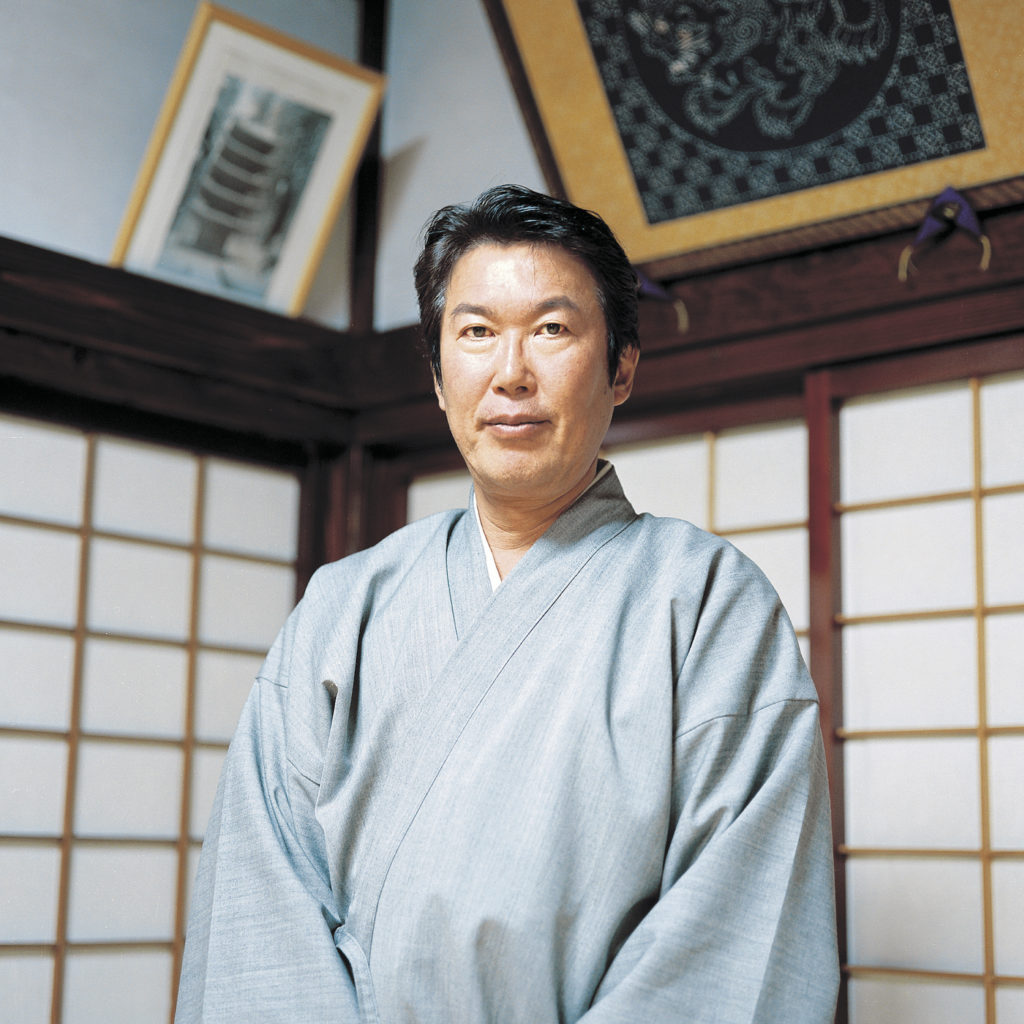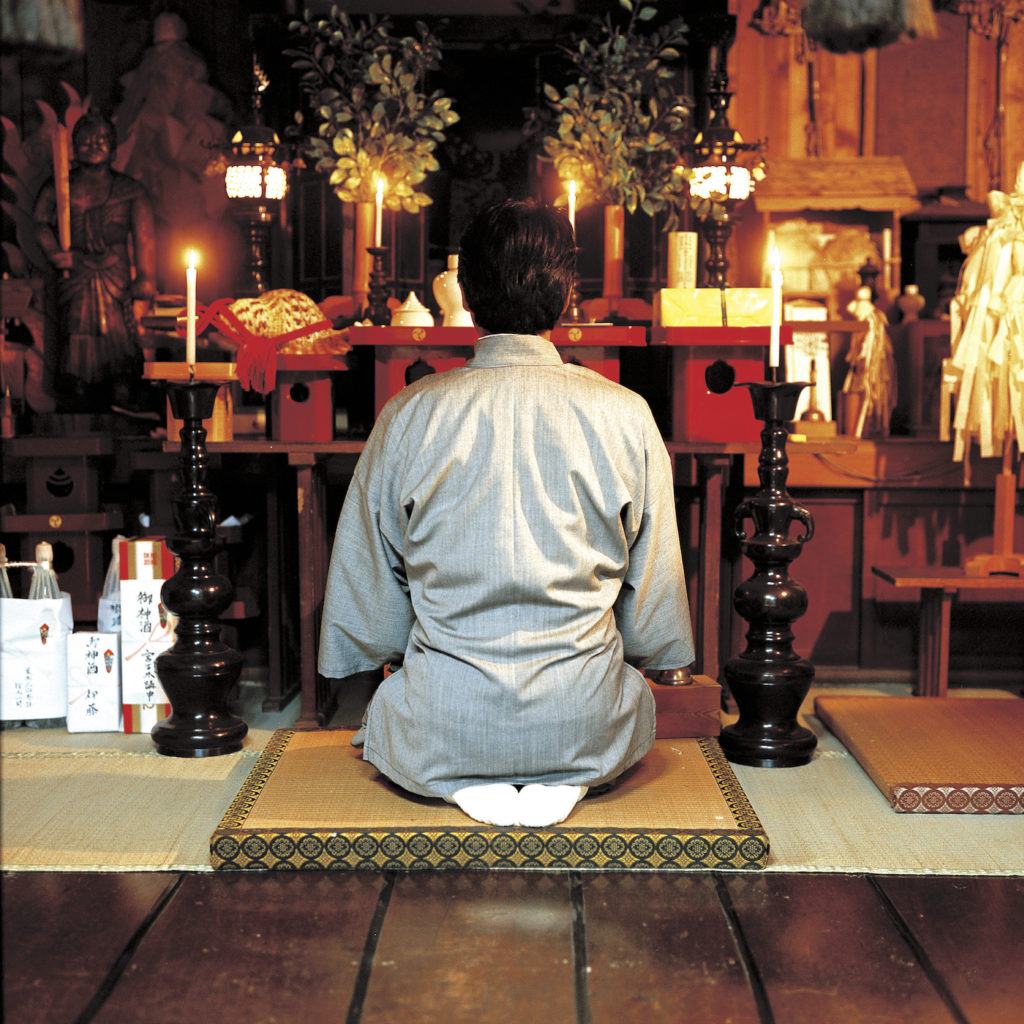Story 03 | Sitting under a heavy mandala
Looking up you’ll see the walls are lined with photographs of the remembered dead; old Yamabushi wearing elaborate costumes who look down upon you as you sit on the tatami floor. This is the main room of Hiroshi Hoshino’s Shukubo, a lodging created for monks. Today this Shukubo is one of about thirty around the Dewa-Sanzan mountains; hundreds of years ago there were ten times as many.
“Some of the old generation still come, but the younger generation don’t. Honestly we don’t know how to bridge that gap, maybe it’s just the way the generations flow- they can’t understand the Yamabushi way.”
Hoshino is gregarious and talkative, a good host. As a 17th generation Yamabushi and shukubo owner he has guided thousands of followers (casually known as Shinja) through the intricacies of the Shugendo belief system. While there are many regular Shukubo around Japan, Yamabushi Shukubo are special; they function as a Shugendo training camp and spiritual school.

“Shukubo is important because this is the start of Yamabushi culture, this is where knowledge is passed down,” says Hoshino. He will act as a mentor, guide and leader to visiting Shinja—regular people who come to raise their social and spiritual status and advising them on how to pray and how to use sacred Yamabushi objects.
Hoshino moves into his small alter room. In Buddhism these home alters are called Butsudan, in Shinto they are known as Kamidana, but Hoshino’s Shugendo alter is a sacred miscellany combining elements from both: sacred papers, texts for chanting, candles, incense, wooden deities, holy rope and hôragai. The understanding of each item’s function only stays alive if Shinja visit the Shukubo, which is why, each year, Hoshino travels to do “sales” in Chiba, a practice Shukubo owners have performed since Edo times. It’s not hard to convince people; as recent as the 1950’s the men of northern japan were not considered men (or an adult) until they had trained in the mountains with Yamabushi.
Before we leave the Shukubo Hoshino pulls out two photographs from the wall, one in black and white and one in color. The black and white photo is of his father, shirtless, carrying an enormous ritual rope, the color photo is of himself, shirtless, carrying an identical ritual rope. In these images we see a reelection of the Shugendo mandala—a profoundly experienced cycle of life, death, and rebirth—carried from the past into the future by people like Hoshino.
“That is what I enjoy most about this work, the weight of history, I like the way that burden feels.”
< PAPERSKY no.34(2010) >












